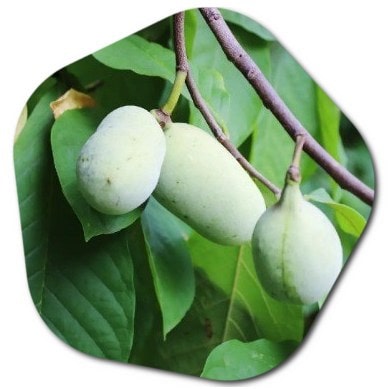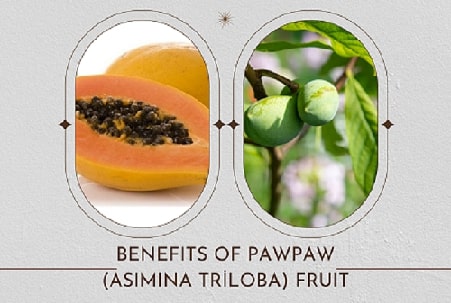What is the largest fruit tree native to North America?
The largest fruit tree native to North America is the Pawpaw (Asimina triloba). The Pawpaw tree is native to the eastern United States, particularly in the Appalachian region. It is a deciduous tree that can reach heights of 15 to 30 feet (4.5 to 9 meters) and has a spreading canopy. The Pawpaw produces the largest edible fruit of any native North American tree. The fruit is typically oval-shaped and can grow up to 6 inches (15 centimeters) in length. It has a greenish-yellow skin and creamy, custard-like flesh that is sweet and aromatic. The flavor is often described as a combination of banana, mango, and melon.
Pawpaw fruits are enjoyed by wildlife and have gained popularity among enthusiasts who appreciate their unique flavor. They are typically harvested in late summer and early fall. While Pawpaw trees are native to North America, they are not as widely cultivated as some other fruit trees, but efforts are being made to increase their popularity and availability.
What is the fruit of the pawpaw (Asimina triloba) tree?
The fruit of the Pawpaw tree (Asimina triloba) is also called the pawpaw. It is a large, edible fruit that is native to the eastern United States. The pawpaw fruit is typically oblong or oval-shaped and can range in size from 3 to 6 inches (7.5 to 15 centimeters) in length.

The skin of the pawpaw fruit is thin and smooth, and its color can vary from green to yellow or brown when ripe. The flesh of the fruit is creamy, custard-like, and pale yellow in color. Inside the fruit, you will find several dark brown to black seeds, which are not edible.
The flavor of the pawpaw fruit is often described as a combination of banana, mango, and melon, with a sweet and tropical taste. It has a unique and pleasant aroma. The texture of the flesh is soft and smooth, similar to a ripe avocado.
Pawpaw fruits are enjoyed fresh, and they can be eaten as is or used in various culinary applications. They are used in desserts like pies, ice cream, and smoothies. The fruit is highly perishable and is best consumed when fully ripe. Harvesting and consuming pawpaw fruits at their peak ripeness is important to enjoy their full flavor and texture.
Where does the pawpaw (Asimina triloba) tree grow in North America?
The Pawpaw tree (Asimina triloba) is native to the eastern and southeastern regions of North America. It is primarily found in the United States, growing in a range of habitats from the Atlantic coast to the Mississippi River and from the Gulf of Mexico to the Great Lakes.
The natural range of the Pawpaw tree includes states such as:
- Eastern United States: It is commonly found in states like Ohio, Kentucky, Tennessee, Virginia, North Carolina, South Carolina, Georgia, Alabama, Mississippi, and Florida.
- Appalachian Region: The Pawpaw tree is particularly abundant in the Appalachian Mountains, stretching from Pennsylvania and New York in the north to Georgia and Alabama in the south.
- Midwestern United States: It also occurs in parts of the Midwest, including Illinois, Indiana, Missouri, and Arkansas.
The Pawpaw tree thrives in rich, moist soils and is often found growing in shady understory areas of forests, along streams and riverbanks, and in low-lying, well-drained areas. It prefers a humid climate and is well-suited to the eastern and southeastern regions of North America.
Outside of its native range, the Pawpaw tree can be grown in other parts of the United States and even in some regions of Canada, as long as the climate and growing conditions are suitable. It is worth noting that the tree has specific temperature and chilling requirements for proper fruiting, which may limit its cultivation in certain areas.
Benefits of Pawpaw (Asimina triloba) fruit
Pawpaw (Asimina triloba) fruit offers several potential health benefits. While scientific research on the fruit is limited, it is known to contain various nutrients and bioactive compounds that contribute to its potential health-promoting properties. Here are some potential benefits of Pawpaw fruit:

- Nutrient-rich: Pawpaw fruit is a good source of essential nutrients such as vitamins A, C, and E, as well as minerals like potassium and magnesium. These nutrients play important roles in supporting overall health and wellbeing.
- Antioxidant properties: Pawpaw fruit contains antioxidants like vitamin C and flavonoids, which help protect the body’s cells from damage caused by harmful free radicals. Antioxidants have been associated with potential benefits for heart health, immune function, and reducing the risk of chronic diseases.
- Fiber content: Pawpaw fruit is relatively high in dietary fiber, which promotes healthy digestion and may help regulate bowel movements. Adequate fiber intake is important for maintaining a healthy digestive system.
- Potential anti-inflammatory effects: Pawpaw fruit contains certain compounds that have been studied for their potential anti-inflammatory properties. Inflammation is associated with various chronic diseases, and consuming foods with anti-inflammatory properties may be beneficial for overall health.
- Rich in polyphenols: Pawpaw fruit is a source of polyphenolic compounds, which have been studied for their potential health benefits, including antioxidant, anti-inflammatory, and cardiovascular health-promoting properties.
- Unique flavor and culinary versatility: Aside from its potential health benefits, Pawpaw fruit is known for its unique flavor profile, often described as a combination of banana, mango, and melon. It can be used in various culinary applications, such as desserts, smoothies, ice cream, and baked goods, adding a tropical and creamy touch to recipes.
It’s important to note that while Pawpaw fruit shows promise in terms of potential health benefits, further scientific research is needed to fully understand its specific effects on human health. Additionally, individual responses may vary, and it’s always advisable to consume a balanced and varied diet for overall health and wellbeing. What is the largest popular fruit tree native to North America? >>





